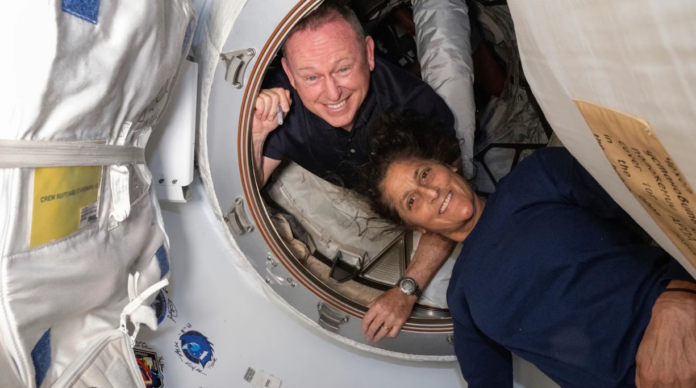Effects of space travel on astronauts’ health Because NASA astronauts Sunita Williams and Butch Wilmore have just returned home after flying aboard the International Space Station (ISS). Though their time in space was dominated by revolutionary scientific research and technological innovations, it subjected them to a number of health issues. From the loss of muscle mass and the strengthening of the bones to changes in vision and psychological stress, space travel affects the human body. Now that they have returned, their recovery post-mission is as crucial as their moment in orbit.
Effects of Microgravity: Weakened Muscles and Bones.
One of the most well-documented effects of space travel is microgravity’s impact on muscles and bones. With no constant force of Earth’s gravity, astronauts undergo vast muscle wastage and bone loss. Research has determined that astronauts lose as much as 1% of bone mass each month during space travel, which makes them more susceptible to breakage and mobility problems once they are back on Earth.
To counteract this, astronauts go through a rigid exercise routine aboard the ISS that involves resistance and cardiovascular exercises. Williams and Wilmore stuck to these routines but even so, their bodies will need rehabilitation back on Earth. NASA’s post-mission recovery programs include physical rehabilitation to help astronauts rebuild strength and readjust to Earth’s gravity.
Radiation Exposure: A Silent Threat.
Another major challenge facing astronauts is exposure to high doses of cosmic radiation. On Earth, our atmosphere provides a shield against dangerous space radiation. But astronauts in space are in constant contact with radiation doses many times greater than on Earth. Chronic exposure will elevate the incidence of cancer, cardiovascular ailments, and neurological disorders.
While on their mission, Williams and Wilmore were constantly being monitored for exposure to radiation. Upon their return, they will be further medically evaluated to see if there are any long-term consequences. Researchers are still trying to understand the effects of space radiation on the human body and how to come up with better protection for the next missions, particularly as NASA gears up for deep-space missions to the Moon and Mars.
Vision Changes and Fluid Shifts.
Many astronauts experience vision problems after returning from space, a condition known as Spaceflight-Associated Neuro-ocular Syndrome (SANS). In microgravity, bodily fluids shift upward instead of settling in the lower body, increasing pressure on the brain and eyes. The result can be changes in eyesight, including blurred vision and difficulties in focusing.
Williams and Wilmore, along with all the other astronauts, received eye checkups periodically during space. Once back, they will remain under observation to check whether vision has been altered and whether long-term effects would need to be treated. Such studies are of immense importance to upcoming missions when the astronauts would spend more years in space and would need answers to combat vision problems. Psychological and Sleep Challenges. Space missions are physically demanding and pose significant emotional and mental challenges for astronauts.
Astronauts spend time in cramped spaces away from their families with tightly structured schedules and little personal time. The lack of natural day-night cycles disturbs sleep patterns, causing fatigue, mood swings, and mental problems.
Theres Negative Effects of Space Travel on Astronauts’ Health & Recovery that is why NASA offers psychological support through virtual family contact, structured routines, and light therapy to maintain astronauts’ mental well-being. In spite of this, it is an emotional readjustment upon their return to Earth. Williams and Wilmore will receive psychological testing to facilitate easy adjustment back into regular life.
Lessons for Future Space Missions.
The medical issues Williams and Wilmore experienced are worth learning from in the future of space travel. As NASA looks to send humans on longer missions to the Moon and Mars, it is essential to understand and counteract these risks. Researchers are investigating sophisticated countermeasures, such as artificial gravity measures, enhanced radiation shielding, and more effective exercise programs to enable astronauts to stay healthy in space.
The information collected during Williams and Wilmore’s expedition will be used to make further medical breakthroughs, making sure that astronauts are more ready for long-duration spaceflight. Though their space mission is over, their recovery back on Earth is just as important in determining the future of human spaceflight.




